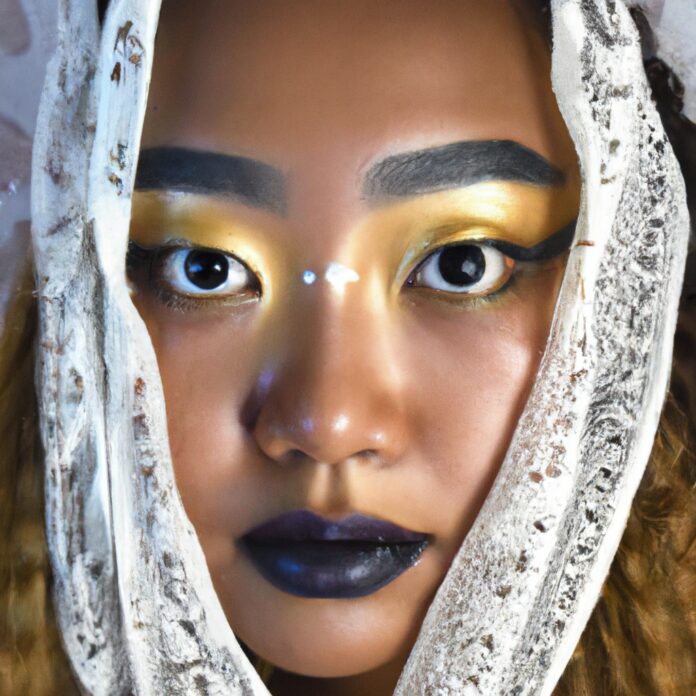Whether you are born in India, raised in America, or grew up on the African plains, the practice of makeup has spanned every culture and nation. While in certain societies it is a sign of respect and reverence, in others, it is just a fun way to express yourself. Beauty Beyond Borders: Exploring Diverse Cultural Makeup Traditions showcases the worldwide beauty of makeup as art through its celebration of the diverse global practices of makeup.
1. Uncovering Beauty Across Cultures
- Understand the Slang: It’s an unwritten rule when travelling the world, to immerse yourself in the local culture. One great way to identify this is by familiarizing yourself with the local slangs. For instance, in Japan, people commonly use the word ‘Omiyage’, which references to a gift which is usually brought back from a trip for social purposes.
- Discover Local Cuisine: Beyond the languages, you can also get to know different cultures through its food. Every dish has a different meaning and origin. In Italy, a soup made from spinach and ricotta cheese is popular for its triangular shape, symbolizing a bridge between the three key ingredients.
- Music: Music is an essential window to any culture. Every country has its own set of folk tunes and classic tunes. Tales of love, war and even love for the country can all be found in music. Listening to it is the perfect way to understand the personalities of people in the country itself.
- Performance Arts: There’s an array of performance arts that give you insight into the culture of different nations. From the Yosakoi dance from Japan, which tells stories of the summer dance of fishermen, to the Reshouf traditional dances from Turkey, exploring the many performance arts across different countries can be exciting and enlightening.
- Vibrant Paintings and Street Art: Street art has been used for years as a means to spread a message and create a feeling of community. Street art showcases the political and cultural messages of a country, from Dhaka in Bangladesh, to Mexico. Exploring artworks or murals can be interesting and provide an amazing backdrop for photography.
- Appreciate its Historical Sites: Last but not least, understanding different cultures often comes down to discovering and appreciating its history. Learning about the old and modern monuments of a place can be a great way to discover the culture. For example, the Taj Mahal in India, dedicated to love and honour of a wife, symbolizes the value of spirituality in Indian culture.
Beauty in a culture comes in many forms, from language to food, music to art. Every culture has a unique way of expressing itself, and it’s only through exploring it that you can truly appreciate its beauty. Whether through widely acknowledged tourist sites or interactive folk performances, here are some ways to uncover beauty around the world.
2. Connecting Through Universal Practices
Culture is no longer an isolated sphere. Universal practices have connected many people to each other, regardless of their differences in language, standpoint, and beliefs.
The Value of Exchange
- The exchange of goods, services and ideas has helped bring people together and understand each other better.
- The spread of culture and knowledge between cultures enables trade, education, and business.
Whether we acknowledge it or not, we are all connected through universal practices. It enables us to connect in surprising ways. It allows us to see the world in a more unified way.
Trade Comes in Many Forms
The rise of global markets has helped facilitate this interconnectedness. Even when different places have different cultures, they still share a common language of goods. This universal language allows us to communicate and transact.
But trade isn’t just about goods and services. Ideas, practices, and beliefs can also be traded. This allows for global exchanges of philosophies and concepts. Many cities, countries, and cultures become united when they work together to understand and honor one another’s practices.
Embracing Other Cultures
To truly connect with each other, one must embrace new cultures and find ways to co-exist harmoniously. By accepting each other’s differences, we can form strong relationships and work together even more. For instance, by seeking to understand where other people come from and their beliefs, we can foster stronger bonds.
By continuing to embrace universal practices, we can continue to forge meaningful relationships and connections. As we open our hearts and minds, we will continue to grow, learn, and exchange.
3. Colorful Customs: Exploring the World of Cultural Makeup Traditions
Cultural makeup has a long history all around the world. While makeup has become more commercialized and associated with fashion in the modern day, it wasn’t always so closely tied to the beauty industry. Across different cultures, makeup plays different functions, symbolizing meaning and expressing regional histories.
From the traditional bindi of India to the ceremonial yellow ocher found on the Himba people of Namibia, these regional beauty customs can tell us a lot about historic and present cultures. Let’s explore some of the most colorful beauty traditions around the world.
- Ganda Biro: Somalia – A Somalian woman’s Ganda Biro is an important symbol of femininity in their culture. Women use a special type of antimony powder made up of lead and sulfur, to make intricate facial decorations for gatherings and special ceremonies. These traditional markings symbolize the beauty of the Somali woman.
- Nyasaye E Ciang’: Kenya – This facial makeup is found among the Maasai tribes of Kenya. Using a red clay-like substance derived from trees, these face decorations are believed to bring the warrior or initiate closer to his god, Nyasaye. These designs express protection, strength, and courage.
- Miana: Pakistan – Dark and red facial tattooing has been a tradition since ancient times in Swat Valley, Pakistan. This type of body art is known as ‘miana’, which is an expression of beauty that women can voluntarily choose or can be used to mark a woman’s social standing within her community.
In the South American continent, different indigenous tribes have a long history of face-painting. Ecuadorean Shuar arua use charcoal-based paints, while Brazilian Guarani paint intricate designs featuring animals or plants with a combination of pastels and flower-based oils.
In Indonesia, sun-protection is just one reason for the traditional custom of Javanese cone-shaped facial decorations, made using oils, waxes, and clay. The traditional custom of Likuku among the Mangbetu people in Congo is characterized by facial scarification and is believed to bring spiritual protection and distinguish their ethnic identity.
These customs are only a few of the many unique and colorful ways in which beauty is expressed through makeup around the world. Whether for adornment, protection, or cultural symbolism, cultural makeup customs are one of the more interesting facets of human history.
4. New Horizons in Beauty: Exploring Different Cultures and Customs
It can be inspiring and eye-opening to delve into the beautification methods of other cultures. Beauty products and customs from centuries ago and across the world offer us alternate perspectives on the idea of beauty and the power of artistry. A new horizon for beauty exploration awaits you:
- Asian Beauty: Traditional Asian beauty regimes encompass a wide range of practices and customs depending on the culture. From skincare treatments such as “Jade Rolling” to facial massage, these ancient practices have stood the test of time. Asians also have a deep-rooted history of combining ingredients with long-term health benefits.
- Aboriginal Beauty: Aboriginal people have used herbs, ochre, clays, and bark for traditional beautification purposes for hundreds of years. From body artwork to coastal sea sponges for exfoliating, these unique ways of refining the skin provide a refreshing twist of the world’s oldest culture
- Ethiopian Beauty: Ethiopia is home to many colorful beauty rituals. One popular tradition is oiling the body; meant to both moisturize and relax the muscles and joints. Essential oils like frankincense are also used by Ethiopians to promote peace of mind.
- European Beauty: In Europe, many women make use of mineral-rich clays for natural face masks. Europe is also home to an abundance of herbal remedies, which have evolved over centuries. Herbs such as chamomile, rosemary, and lavender have been used for centuries to promote youthful-looking skin.
Exploring these new horizons of beauty will open your eyes to the incredible diversity of traditions and techniques around the world. With patience and an open mind, you can discover alternate paths of beauty exploration that can greatly enhance your own practices and routines.
Not only is exploring different cultures and customs rewarding from a creative standpoint, but it can also be a valuable tool for promoting global empathy and understanding. Let’s foster appreciation for different ways of beautifying ourselves and our environment to build a world with more acceptance and harmony.
We hope that after reading this article you have come to appreciate the special and diverse connections that make up everyone’s beauty traditions. So, from now on, let’s put beauty beyond borders and foster an appreciation and understanding of facets of makeup from around the globe!


